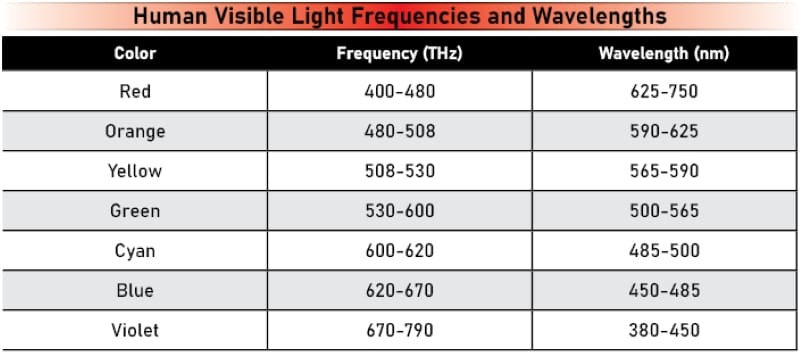We’ve watched hundreds of videos on YouTube and read dozens of articles on headlight upgrades, yet we’ve never seen anybody discuss how different bulb types light up different colored objects. We aren’t discussing the headlight bulbs’ brightness or the beam pattern. Halogen, HID and LED bulbs output different wavelengths of energy. We see objects when that energy reflects off them and bounces back to our eyes. It stands to reason that the perfect light source would illuminate all colors identically. However, that isn’t the case. Let’s dive in.
Light Source Spectral Analysis
Let’s start with an analogy. Most of our readers are familiar with the audible frequency range of human hearing, which is 20 Hz to 20 kHz. There are plenty of frequencies above 20 kHz that animals like dogs, cats, dolphins, bats and whales can detect. A porpoise can hear from 75 Hz to 150 kHz. That’s a half-octave higher than bats.
Our vision works in the same way. Our eyes can detect light within a specific range of frequencies, between 400 and 790 terahertz. Different frequencies represent different colors. As we age, our ability to detect differences in violet, blue and green objects diminishes.
The chart above shows the colors the human eye can perceive, including frequency ranges and wavelengths. When we discuss color, we use wavelength rather than frequency. Energy with a higher frequency than violet light is called ultraviolet. Energy with a lower frequency than red light is called infrared. Some animals can see energy in these extended frequency ranges to help them find food or mates.
How Sunlight Affects Color Distribution
We can measure the amount of each frequency a light produces using a color spectrometer. The information the spectrometer provides is like a real-time analyzer for audio signals. It tells you what frequencies (or wavelengths) are present and the amplitude of each of those frequencies.
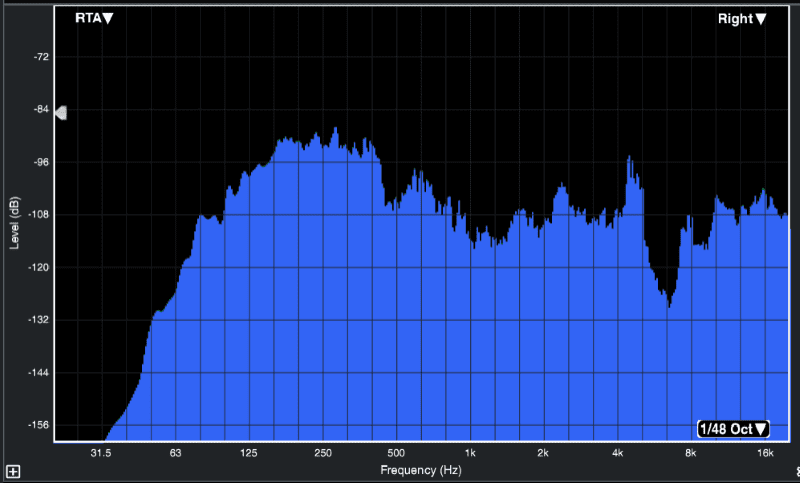
The graph above shows that there isn’t much information below 125 Hz, which is logical since the sample came from a laptop speaker. Because this is a sample of music and not a test tone, there isn’t much else we can extract from the data other than the information extending to 20 kHz.
Now, let’s establish a standard for light spectral measurement. The graph below shows the spectral content of a measurement of the sun taken on a clear day.
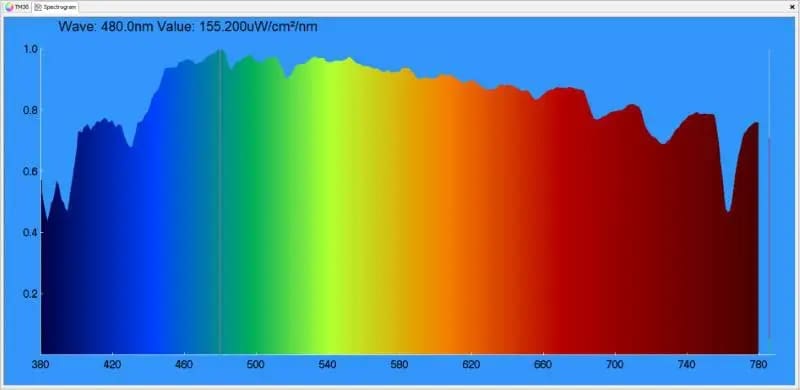
We can see that the light distribution is relatively even across the visible spectrum. Environmental factors like moisture, oxygen, dust and pollution cause dips and low-wavelength attenuation.
How we perceive objects depends on the light source that illuminates those objects. All colors are easily visible when we are outside on a sunny day. When we move indoors and use different light sources, the energy balance shifts dramatically. Let’s look at three popular headlight types and analyze how they produce light.
Headlight Bulb Type and Color Content
Up first, let’s look at a halogen headlight bulb. This is a basic Phillips bulb with a single filament. It doesn’t have any blue coatings. We measured the light level at a distance of 2 meters from a projector-style headlight assembly.
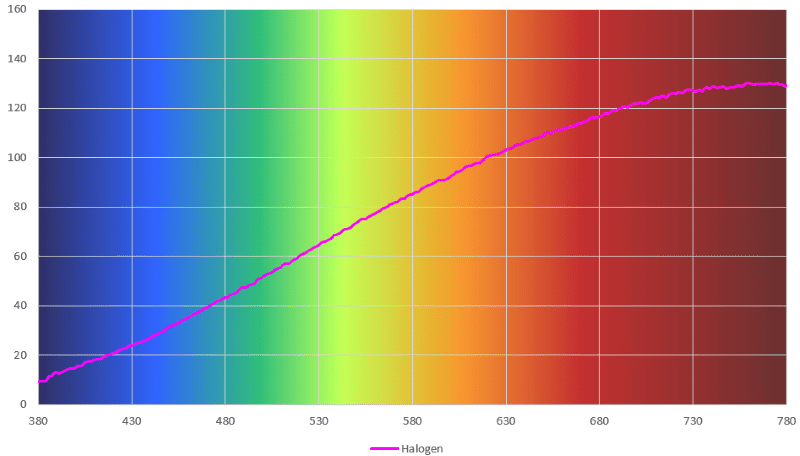
It’s easy to see that most of the light energy produced by the halogen bulb is in the high wavelength/lower frequency range. This energy distribution makes sense, given the amount of heat the bulb produces. This halogen bulb produces very little green or violet light.
Now, let’s check out the light produced by a high-intensity discharge (HID) light bulb. This particular system is from a company called Lumens. I’ve used them in almost all my vehicles for decades.
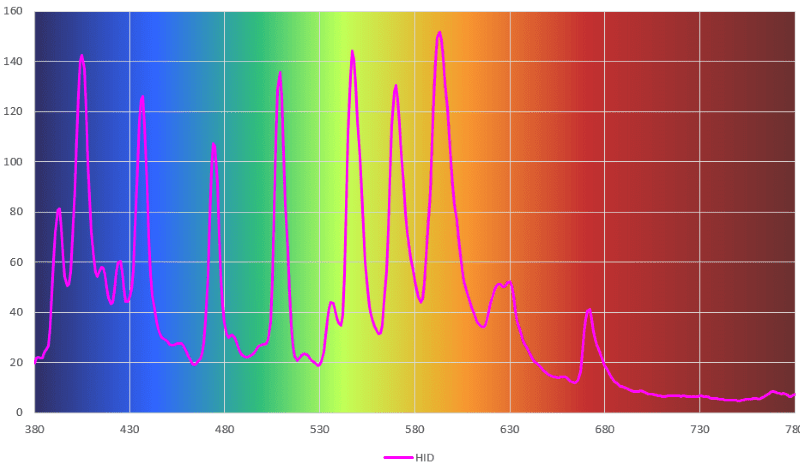
The HID bulb produces light that contains peaks at several lower wavelengths. Those peaks would correlate to the different chemicals present in the ARC chamber. Using gas chromatography, scientists can analyze the light from burning gases to identify the elements that are present. The takeaway from the HID analysis is that very little orange or red light is produced.
Let’s look at an aftermarket light-emitting diode (LED) bulb. This is one of the Sportline bulbs from Lumens.
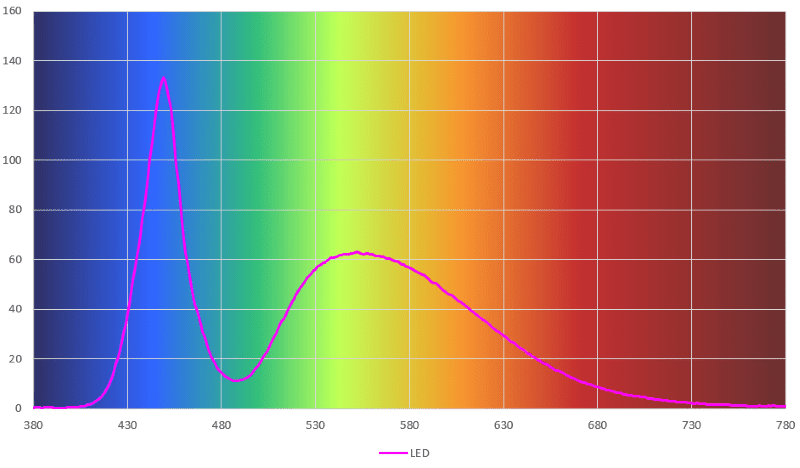
The LED bulb produces primarily blue light with a bit of light green, yellow and light orange. Very little violet, dark blue or red light is produced.
Let’s combine all three measurements to see how they compare in terms of the colors of light energy they produce.
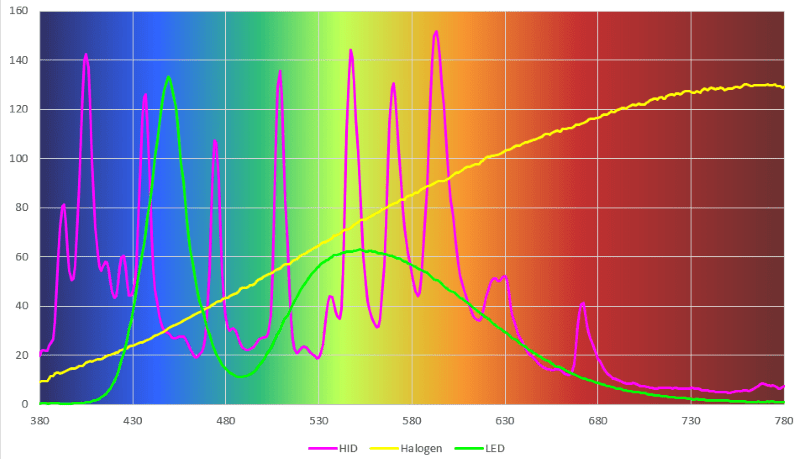
The HID and halogen are similar if you measure the total light produced by these bulbs. The LED isn’t quite as bright in this application. However, we want to look at the frequencies produced by each light source. These correlate to the color of objects that will be illuminated well. If a bulb doesn’t produce a significant amount of red light, red objects won’t show up well.
How Different Light Sources Affect Object Perception
We set up some Hot Wheels cars on a white background to quantify how the different headlight bulb types illuminate different colored objects. We took pictures of the vehicles with the three light sources without changing the camera settings. The camera is a Canon 70D with a 50mm F/1.8 lens. The settings for the images are 1/10 of a second exposure with an f/8 aperture and the camera set to ISO 100. Aside from cropping and resizing, we didn’t adjust the images in any way.

The room lights cast reasonably even light over the cars. The dark violet Batmobile to the left of the two-tone blue SUV is a little dark, as these are LED lights. The vehicles are not in the direct hot spot of the light source since we didn’t want too much reflection.
Let’s start with the halogen headlight first.

The violet Batmobile and blue SUV look almost black in this image. The red car on the right and the fluorescent yellow truck beside it are well-illuminated. Of course, the white car second from the left is also easy to see.
Next is the HID headlight.

The two-tone blue SUV appears much brighter in this image. The red on the far-right car and the yellow on the Lego car beside it are much more subdued than with the halogen light source.
Finally, let’s look at the LED bulb.

Unsurprisingly, the green car stands out more under the LED light. The red, yellow and violet cars remain relatively dark.
Now, let’s combine the three images. I boosted the exposure levels in Adobe Photoshop so the overall brightness is similar in each sample.
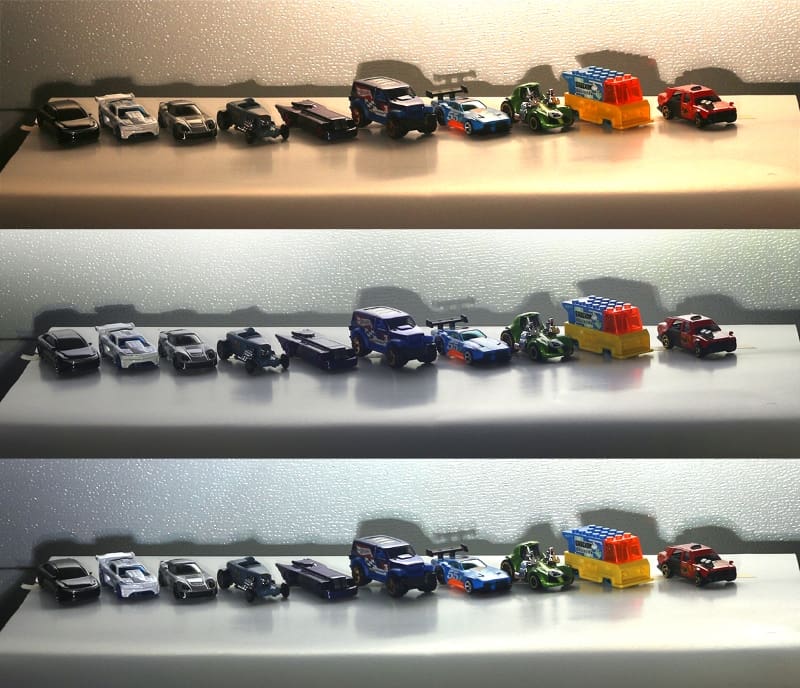
It’s easy to discern that the ability to see objects depends significantly on the spectral content of light sources and not just their measured lux or rated lumens. A halogen or HID bulb would be best if you wanted the highest-performance lighting system. The worst choice for even light distribution would be an LED bulb. This testing shows that many people underestimate the performance of those old-fashioned halogen bulbs.
Different Lights Illuminate Differently Colored Objects
I was in a vehicle with halogen headlights a few weeks ago while it was dark out. It was clear that those headlights did a much better job illuminating red stop and yellow warning street signs than my car with factory-installed HID bulbs. I wouldn’t have described the headlights as bright, but they were surprisingly effective.
If you’re considering a lighting upgrade, remember that the headlight bulb type you choose will significantly affect what you can see. How bright the bulb is might be less critical. Drop by a specialty mobile enhancement retailer today to find out about the light upgrades that are available for your vehicle.

